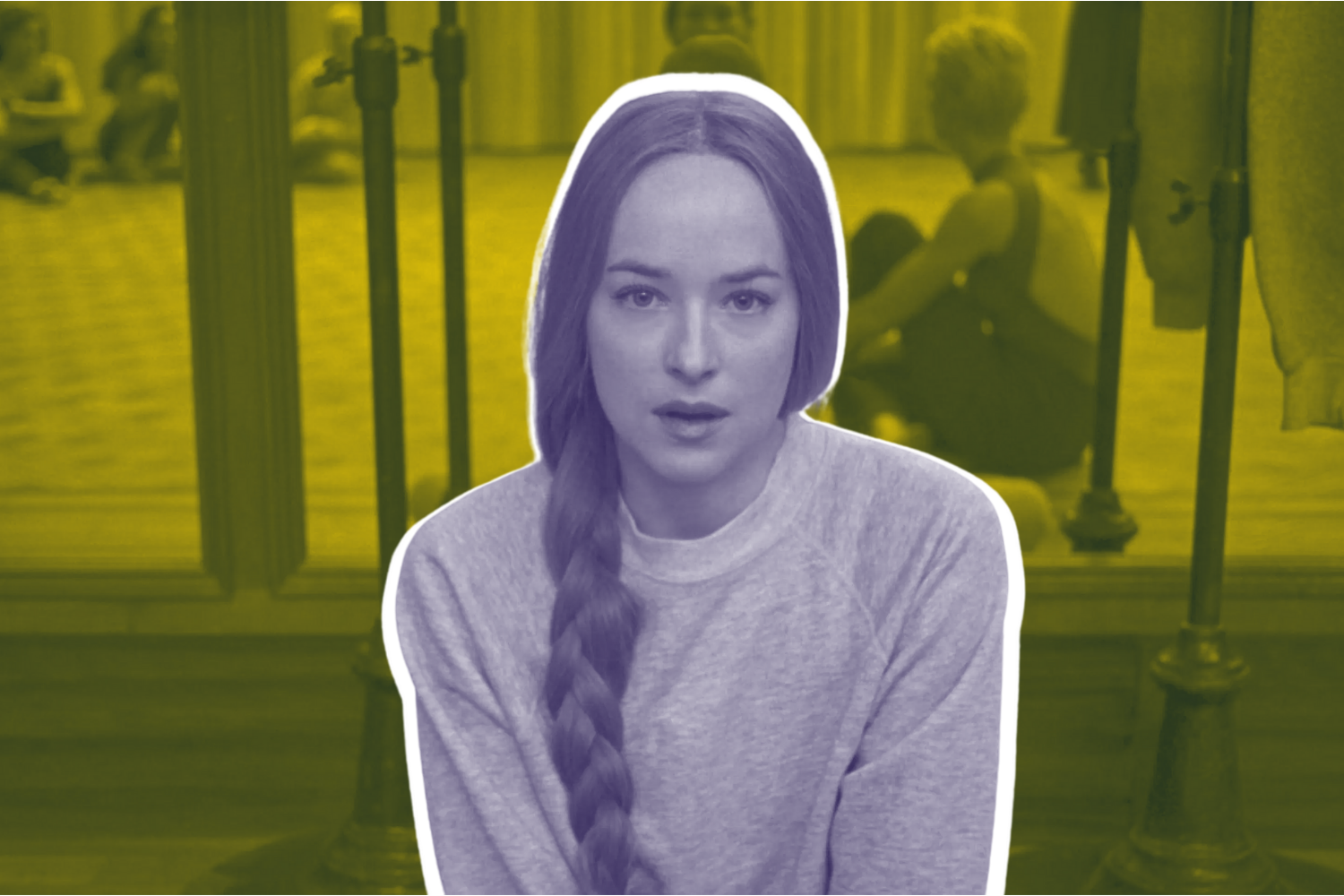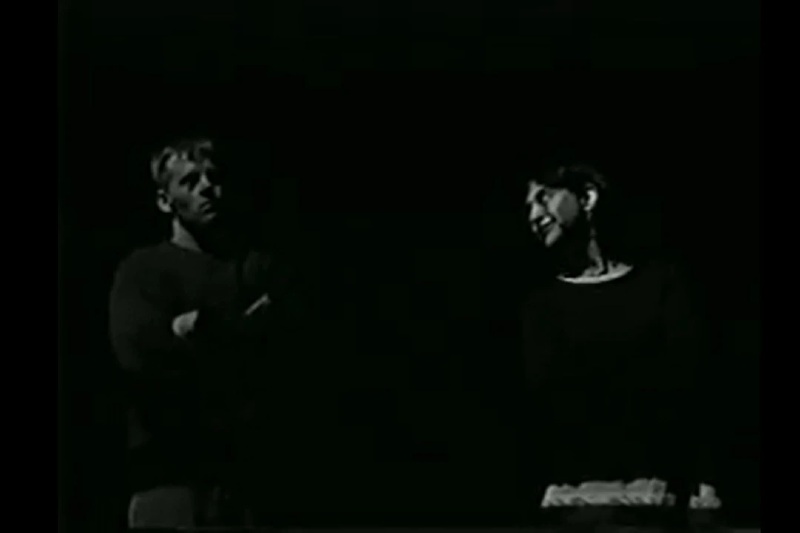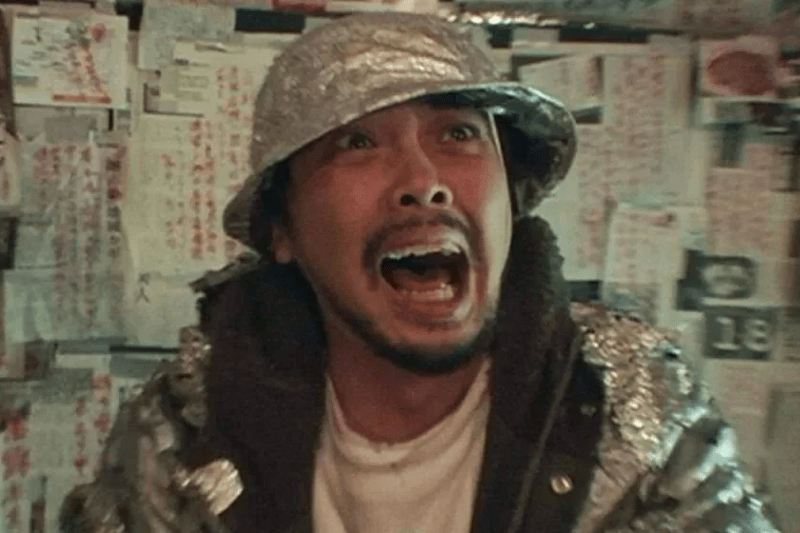In a genre typically considered “for the guys,” it’s time to give a nod to the ladies. Uterus Horror is a subgenre of horror films that focuses on the uniquely female experience of puberty and the act of coming into your sexuality, using horror elements to emphasize and/or act as a metaphor for that experience. These films are often ignored in theaters but quickly develop cult followings. Columnist Molly Henery, who named and defined the subgenre, tackles a new film each month and analyzes how it fits into this bloody new corner of horror.
After a brief hiatus, I’m back and dancing my way into this month’s Uterus Horror film, Suspiria (2018). This film is a dark and twisted reimagining of the 1977 film of the same name, originally created by Dario Argento and Daria Nicolodi. Directed by Luca Guadagnino (Call Me By Your Name) and written by David Kajganich (The Terror), Suspiria is the story of Susie Bannion’s (Dakota Johnson) bizarre journey of self-discovery.
Susie was raised in a strict, religious, Mennonite community in 1970s Ohio. In an attempt to escape her repressed life and pursue her dreams, Susie travels all the way to Berlin to audition at the Markos Dance Academy. Despite her lack of training, she is immediately accepted into the academy after artistic director and choreographer, Madame Blanc (Tilda Swinton), catches part of Susie’s audition. Susie’s enrollment allows her to quickly transform into the ultimate version of herself—and also discover her sexuality under the watchful eye of Madame Blanc.
When we first meet Susie, she is a shy young woman fresh out of the prudish confines of the Mennonite community she once called home. Because of her upbringing—and the fact that she isn’t married—one can assume she hasn’t had any sexual relations up to this point in her life. This is later confirmed in a meeting with Madame Blanc where Susie explains that dancing a specific routine felt like how she imagines “fucking” would feel. This erotic parallel is a theme that repeats throughout Suspiria. Whenever Susie dances, especially while improvising, there is lustful energy to her performance.
Much of Susie’s sexuality clearly comes from her discovering her queerness. The times the audience can sense the most sexual tension are the scenes shared by Susie and Madame Blanc. The pair share intoxicating sexual chemistry that only gets stronger as the film progresses. While there is no explicit sexual activity between the two, there are instances where one could infer it is meant to represent sex. Whether it be the disturbing-yet-seductive dreams Madame Blanc sends to Susie during the night or the moments when Blanc is teaching Susie a new dance, it is clear these two mean more to each other than a typical student and teacher.
Everything we see on screen, from the plot to the writhing dance rehearsals, highlights queer relationships and fosters an appreciation and love of women. Those who run the dance academy are in positions of power and have been for a long time, doing their best to make sure their dancers have their “financial autonomy.” Even the clothes worn by the characters capture the female form with great care and affection, which only emphasizes the wonderful queerness of the film. There is a fantastic interview with Suspiria’s costume designer, Giulia Piersanti, on Vulture in which she dives into many of her original designs and patterns for the clothing that often depicts the female form in some hidden way. The way Susie’s clothing alters as she becomes a freer spirit leads to her transition into her sexuality and into a powerful woman.
While it’s wonderful to watch Susie come into her sexuality, the true highlight of Suspiria is seeing her realize her full potential as a powerful woman. The transformation can be seen in every aspect of Susie’s being, from her voice, to the way she carries herself, to her clothing. The first time Susie is on screen, she is clearly quite timid. She speaks softly, her shoulders somewhat hunched, and she’s wearing very drab, conservative clothes that would be typical of her Mennonite background. During her audition, she comes out of her shell ever so slightly and shows more confidence.
Every time Susie dances, she changes. At first, it is just subtle things, such as rolling her shoulders back and holding her head higher. Later, these changes are more prominent. At one point during rehearsal, Susie speaks up and challenges Madame Blanc’s choreography, suggesting it should be different. Old Susie would never have voiced her opinion like that, especially in opposition to someone as imposing as Madame Blanc. Even Susie’s wardrobe changes. She starts with the conservative farm clothing, then gradually begins borrowing pieces from the other dancers.
There are two major transformative moments for Susie towards the end of Suspiria. The first is when she performs the “Volk” dance. Before the performance, her extremely long hair is chopped just below her shoulders. After the dance—which is meant to be a ritual to prepare Susie for a different transition—she carries herself in an entirely different way. Instead of being timid and soft-spoken, she is self-assured and stoic. When she speaks, her voice is clear and precise.
Her second major transformation is at the climax of the film, as Susie’s spirit is about to be sacrificed so that her body can be the new home of academy director Helena Markos. In order for this to happen, Susie must first kill the woman who gave birth to her—her “false mother.” This symbolic act is a pivotal moment for Susie. It is meant to convey her finally breaking free of the oppressive religion that she was raised in—that held her back—so she can come into her full power and potential. This is the moment when we learn, despite Markos’s claims to be Mother Suspiriorum and one of the three mothers and most powerful witches to exist, that Susie is the true Mother Suspiriorum.
Suspiria tells a story that is quite common in Uterus Horror films. It is about a young woman whose religion stifles her feminine power; a prisoner shedding the repressive culture she grew up in so she can discover her sexuality. And, most importantly, it is about finding the means to embrace your full potential. Suspiria is one of the most stunning films currently in existence because it perfectly weaves Susie’s subtle changes with more grand transitions. It is sure to inspire women to find the potential within themselves, leaving behind the impediments that’d rather keep them contained.
Visit our Editorials page for more articles like this. Ready to support more original horror criticism? Join the Certified Forgotten Patreon community today.







